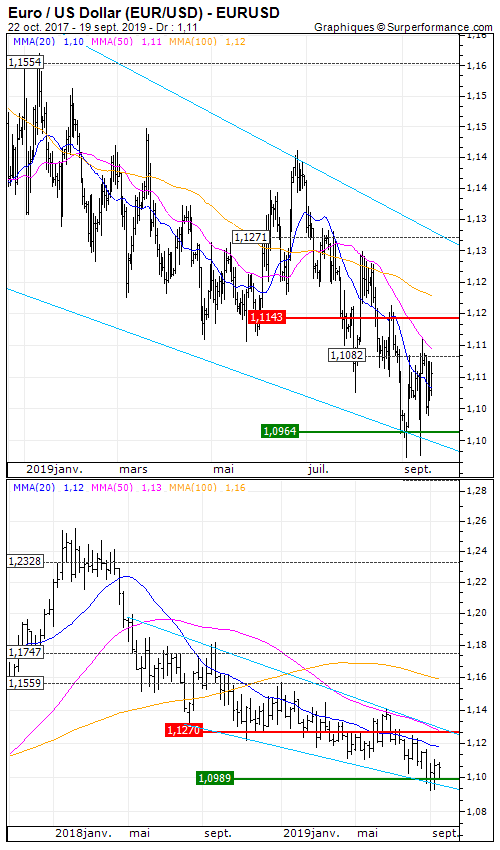Euro / US Dollar (EUR/USD) : The horizon is slow to clear
By Mathieu Burbau
Admittedly, the worst was avoided in Italy and the British Parliament passed a law excluding the possibility of a Brexit without agreement on 31 October next, two elements that are intended to be reassuring for the stability of the Monetary Union Yet negotiations between Pékin and Washington will resume in early October and no one really expects either side to be on the ground, particularly a year into a presidential election on the other side of the Atlantic. The situation should therefore involve the return of some nervousness in the courts and encourage further arbitrations in favour of the greenback.
Monetarily, the gap is also widening. The ECB has just announced a new package of measures to increase the doses set aside for an economy already under infusion: lower rates on deposits, buybacks of public and private debt without time limits and already managed by banks.
Conversely, the Federal Reserve ensured the union minimum in September by lowering its key rate by a quarter of a point, in a context of war over annoying, pantomime and all kinds of insults at Donald Trump. The US central bank even accompanied its decision to revise upwards its growth forecast for 2019 (+2.2%). And while core inflation peaks at a high point in twelve months (+2.4% year-on-year), the probability of a new FED action by the end of the year has clearly declined Undaunted graphically, the Euro continues to slide into the largest study. In weekly data, each rebound from its 20-week moving average offers a sales opportunity while a crossing of 1.0989 at the end of the week would open the way to an acceleration to 1.0590 USD.



